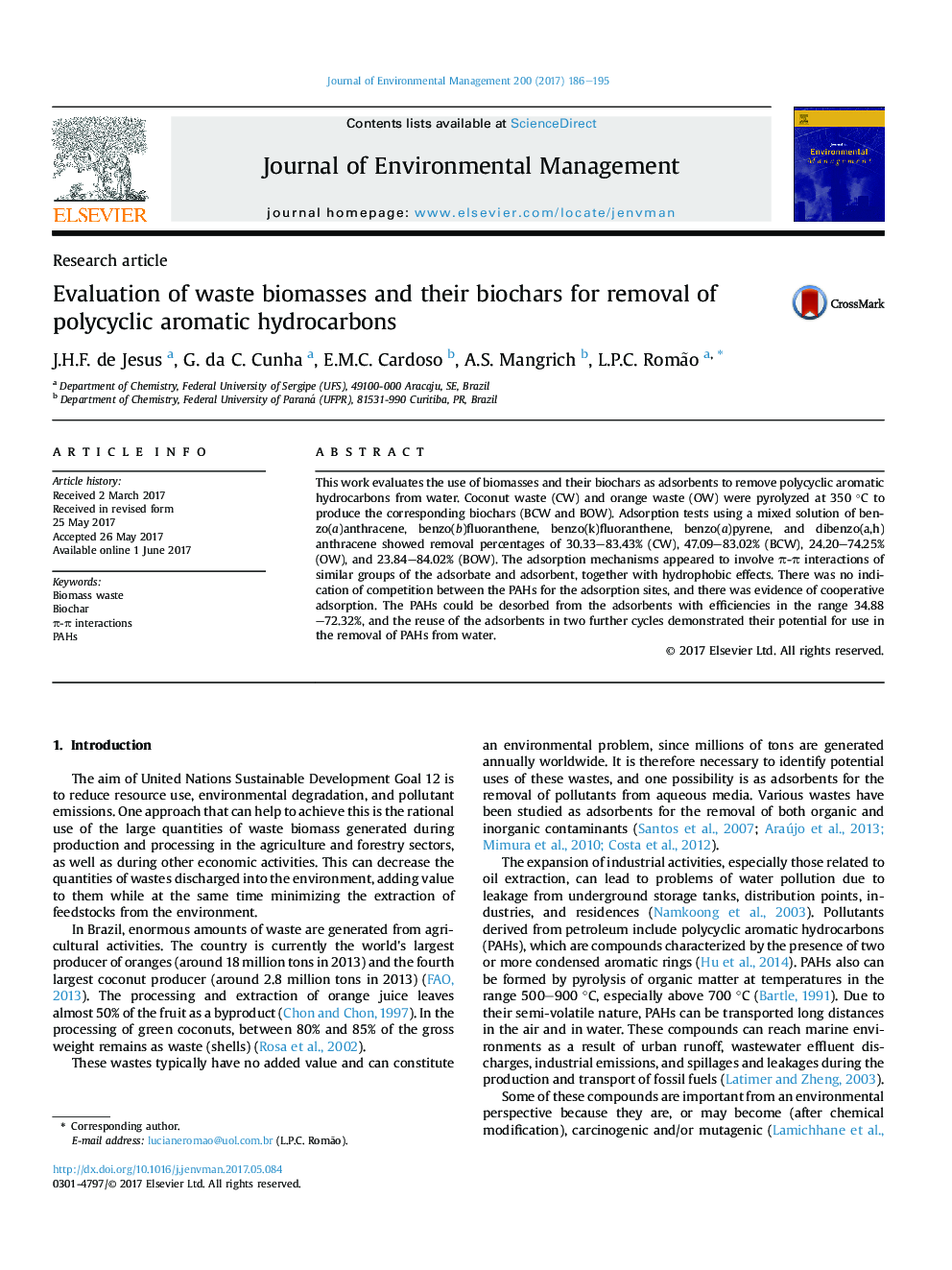| کد مقاله | کد نشریه | سال انتشار | مقاله انگلیسی | نسخه تمام متن |
|---|---|---|---|---|
| 5116329 | 1485217 | 2017 | 10 صفحه PDF | دانلود رایگان |
- Biomasses and their biochars were effective in removing five different PAHs from water.
- Characterization of an adsorbent is a good tool for explaining the adsorption mechanism.
- Cooperative adsorption occurred in the presence of a mixed solution of PAHs.
- The adsorption mechanism involved Ï-Ï interactions of the adsorbate and adsorbent.
This work evaluates the use of biomasses and their biochars as adsorbents to remove polycyclic aromatic hydrocarbons from water. Coconut waste (CW) and orange waste (OW) were pyrolyzed at 350 °C to produce the corresponding biochars (BCW and BOW). Adsorption tests using a mixed solution of benzo(a)anthracene, benzo(b)fluoranthene, benzo(k)fluoranthene, benzo(a)pyrene, and dibenzo(a,h)anthracene showed removal percentages of 30.33-83.43% (CW), 47.09-83.02% (BCW), 24.20-74.25% (OW), and 23.84-84.02% (BOW). The adsorption mechanisms appeared to involve Ï-Ï interactions of similar groups of the adsorbate and adsorbent, together with hydrophobic effects. There was no indication of competition between the PAHs for the adsorption sites, and there was evidence of cooperative adsorption. The PAHs could be desorbed from the adsorbents with efficiencies in the range 34.88-72.32%, and the reuse of the adsorbents in two further cycles demonstrated their potential for use in the removal of PAHs from water.
Journal: Journal of Environmental Management - Volume 200, 15 September 2017, Pages 186-195
